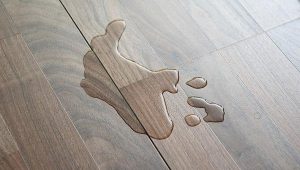Swollen wood flooring due to water damage is a common problem that can affect both the appearance and structural integrity of your floors. Whether caused by leaks, spills, or flooding, quick action is key to minimizing permanent damage. Here’s a step-by-step guide on how to fix swollen wood flooring after water damage.

Step 1: Identify and Stop the Water Source
Before any repair work begins, locate and stop the source of water. This could be a leaky pipe, appliance, or roof. Without resolving the cause, any repairs you make may be temporary.
Step 2: Remove Surface Water
Use towels, a wet/dry vacuum, or a mop to remove standing water from the floor as soon as possible. The faster the water is removed, the less likely the floor will suffer long-term damage.
Step 3: Dry the Affected Area Thoroughly
Use fans, dehumidifiers, and open windows to increase air circulation and dry out the subfloor and wood planks. For severe cases, consider hiring professional water damage restoration services. Drying may take several days depending on humidity and extent of the damage.
Step 4: Assess the Swelling
Once completely dry, check if the wood planks have returned to their original shape. Minor swelling may subside on its own. However, if the planks are still cupped, buckled, or separated, repairs or replacements may be necessary.
Step 5: Repair or Replace Damaged Boards
For lightly swollen areas, sanding the boards down and refinishing may restore the surface. Severely warped or rotted boards will need to be removed and replaced. Always match the new boards with the existing ones for a uniform finish.
Step 6: Refinish the Floor
After replacing or repairing the damaged sections, sand the entire floor if necessary and apply a new finish to protect against future water damage.
Prevention Tips
- Use rugs in water-prone areas like kitchens and entrances.
- Install a moisture barrier under wood floors.
- Wipe up spills promptly.
- Maintain proper humidity levels indoors (between 35–55%).
Acting quickly after water exposure is essential to save your wood floors. Regular maintenance and preventative measures can also go a long way in avoiding costly repairs in the future.




